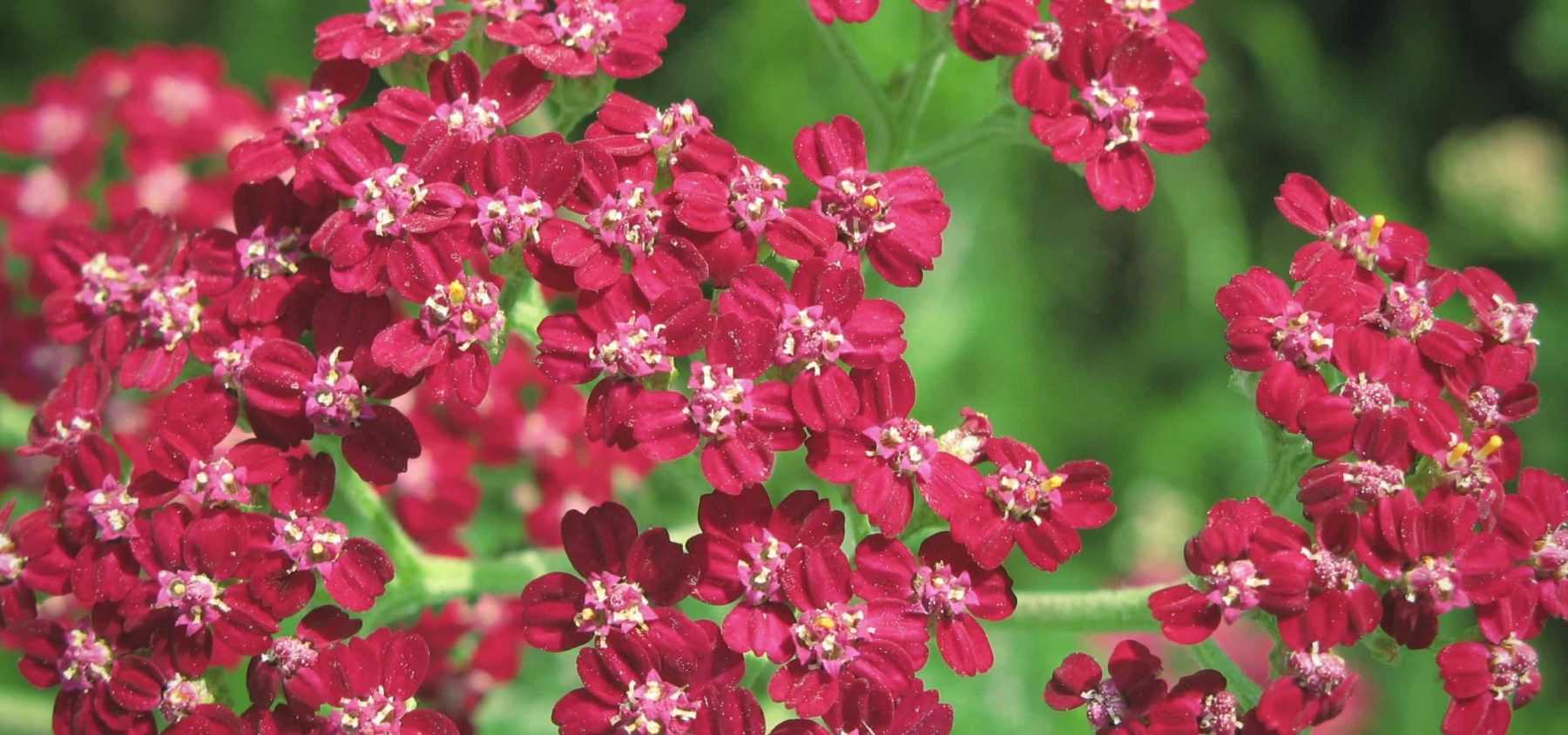
Yarrow: 7 Successful Planting Combinations
to integrate them beautifully into your borders
Contents
Yarrow is an easy-to-grow perennial, whose long-lasting summer flowering brings a wild and natural touch to the garden. The most common is the white-flowered common yarrow, but it can also be red, pink or yellow.
With its wide colour palette, it enlivens rockeries, naturalistic gardens or borders, bringing dynamism and vitality. Yarrows create the most beautiful effect when planted in groups, reminding us of wildflower meadows. Their height varies depending on the variety, but generally they are best placed in the middle of flower beds, behind lower-growing plants. They have an upright, graphic structure and particularly delicate foliage. Yarrow is undoubtedly a plant that brings great lightness to the garden!
How and with which plants should they be paired? In what style of garden do they find their place? Discover our ideas and inspiration for incorporating yarrows into your garden!
To learn all about yarrow, check out our guide Planting, growing and caring for yarrows
In a rock garden
Tolerating both heat and drought, yarrows easily fit into rock garden compositions. Opt for compact varieties, like this yellow yarrow, Achillea tomentosa. Its spreading habit makes it particularly suited for this use. Pair it with other plants that thrive in dry, sunny locations. You can plant alongside it clumps of sedums, sweet alyssum (Lobularia maritima), saxifrages or Convolvulus cneorum. Add some height by planting lavenders and spurges. Avoid varieties like Achillea ptarmica ‘The Pearl’ or ‘Perry’s White’: they prefer cool, heavy soil and slightly shaded positions!
For a natural garden!
With its free habit and airy flowering, yarrow is perfect for creating a cottage-style garden. Plant your yarrows in groups, at a rate of 6 young plants per m², to create a beautiful wildflower field effect! Pair them with plants that have a loose and airy habit. Opt for ornamental grasses like Stipa tenuifolia or Pennisetum. And add some summer-flowering perennials with an airy look: Verbena bonariensis, Gaura lindheimeri or Cirsium japonicum are must-haves. You can pick bouquets and create stunning floral arrangements.
This way, you can create a remarkable naturalistic garden in warm tones, by combining Achillea ‘Terracotta’ with the orange flower spikes of Eremurus ‘Cleopatra’, accompanied by the white flowering of Selinum wallichianum and the golden hues of the grass Stipa arundinacea. These plants with their free habit and slender architecture will bring a lot of lightness to your garden.
Find more inspiration here!
Discover other Achillea
View all →Available in 1 sizes
Available in 1 sizes
Available in 1 sizes
Available in 2 sizes
Available in 1 sizes
Available in 1 sizes
Available in 2 sizes
Available in 1 sizes
Available in 2 sizes
Available in 2 sizes
In a cottage garden
Yarrow will find its place easily in a cottage garden. This is a utilitarian garden where medicinal plants, herbs, vegetables, as well as fruits and flowers are grown. Use boxwood for edging and a few yews to structure the garden. Add some vegetables, such as sorrel, parsnip or fennel. Leave plenty of room for herbs and medicinal plants (sage, hyssop, savory, mint…). You can plant Achillea millefolium ‘Wonderful Wampee’ alongside clumps of lovage, agastache, Centaurea montana, comfrey or mallow.
In a Mediterranean garden
Thriving in sunny and rather dry soils, yarrow is perfect for creating Mediterranean-style gardens. Design a stone feature with rocks and choose drought-resistant plants. Pair yarrow with silver-leafed plants, such as Lavender Cotton or Jerusalem Sage (Phlomis fruticans). Add a few aromatic plants like rosemary or lavender, and ornamental grasses such as Stipa tenuifolia or Festuca glauca. If space allows, plant a few bushes like cypress, olive trees, or oleanders for their colourful flowering. Besides being eco-friendly, low in water and fertiliser needs, this type of garden will require very little maintenance!
In a mixed English border
Create a colourful and vibrant mixed border, typical of English gardens. Position your flowerbed in front of a monochrome hedge to highlight the flowering and the graphic appeal of the plants. Fall for the varieties with bright and zesty-coloured flowering, such as Achillea ‘Cerise Queen’ with its purplish-pink flowering or Achillea ‘Walther Funcke’ with its orange flowers. They will bring vitality to your flowerbeds! For a garden rich in colours, plant them alongside agapanthus, echinaceas or cosmos.
In a cottage garden
Create a cottage garden with a natural and delicate style, favouring mauve, blue and white flowering. With its soft pink flowers, Achillea ‘Apple blossom’ fits perfectly into this type of garden. Train a clematis or climbing hydrangea (Hydrangea petiolaris) against your house wall. Plant some delphiniums, foxgloves, lupins or lavateras in front of them. You’ll achieve a garden with lush vegetation and pastel tones, giving it great charm and romance.
To play with colours!
Mix colours and play with contrasts, by pairing yellow-orange varieties with mauve or violet flowers, for example. You could plant Achillea ‘Terracotta’ alongside Origanum ‘Rosenkuppel’, Stachys ‘Hummelo’ and Sanguisorba ‘Red Tip’. Orange or yellow varieties also pair beautifully with the golden foliage of ornamental grasses, which will add a striking graphic element to your flower beds.
Give your garden an exotic feel by combining yarrows with other warm-toned flowers. For instance, you could pair ‘Feuerland’ or ‘Walther Funcke’ yarrows with Daylilies, Red Hot Pokers, Dahlias or Montbretias. Don’t hesitate to add some purple foliage to highlight these fiery flowerings.
Finally, you can energise your flower beds by combining zesty colours: pink, orange, peach or lemon yellow. Grow Achillea ‘Moonshine’, ‘Terracotta’ or ‘Lilac Beauty’ alongside asters or cosmos in vibrant hues.
- Subscribe!
- Contents
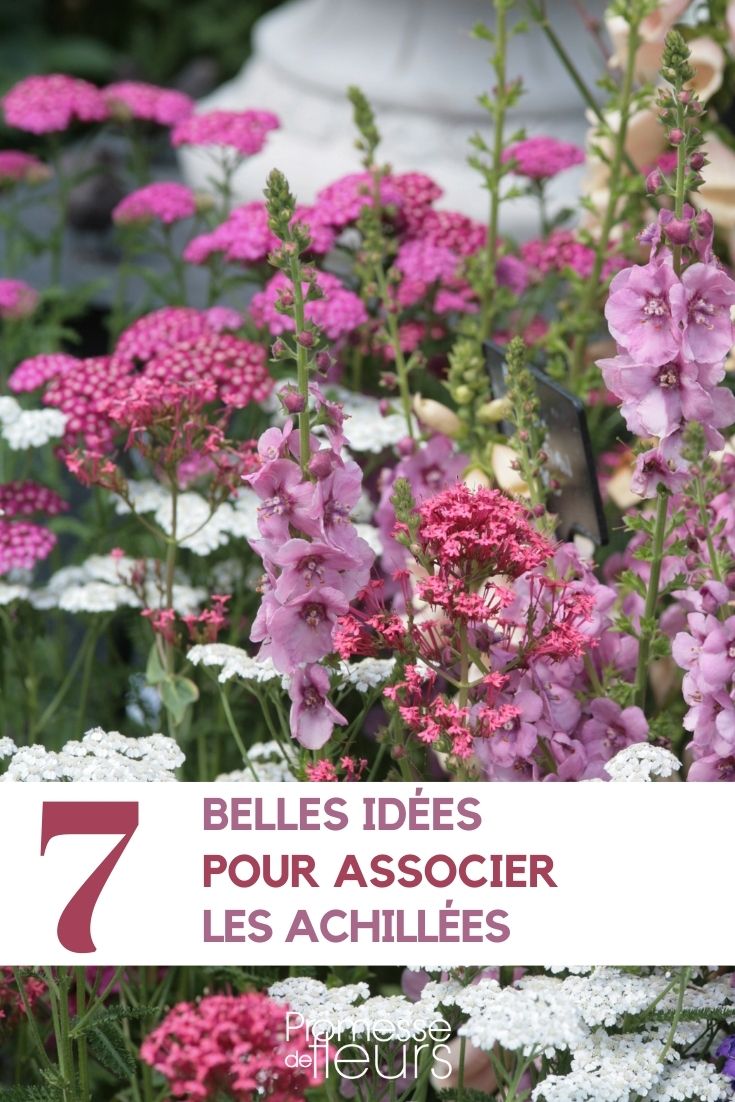



































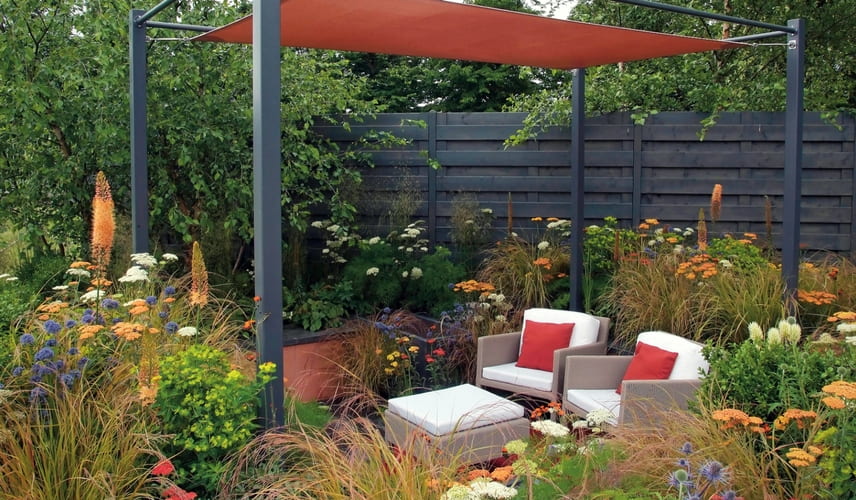

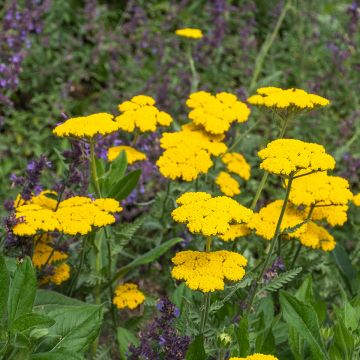
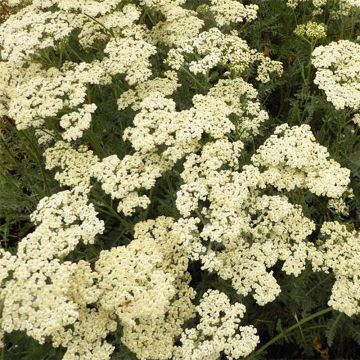
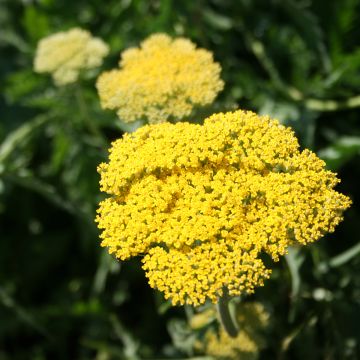
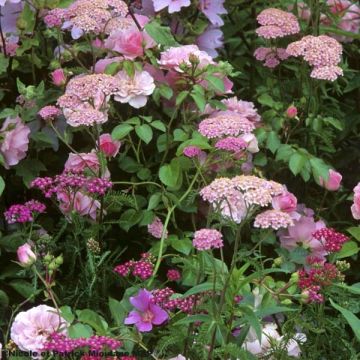
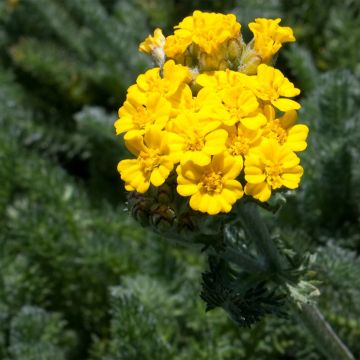
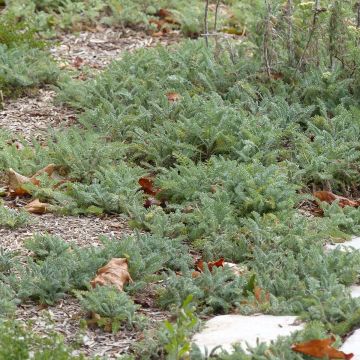
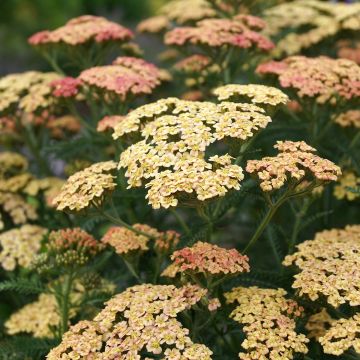
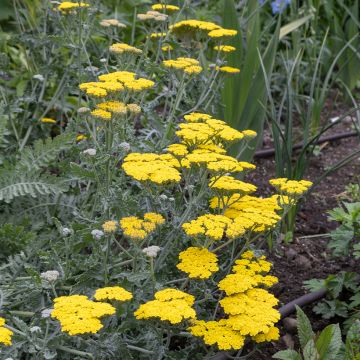
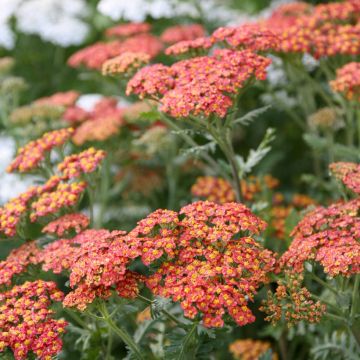
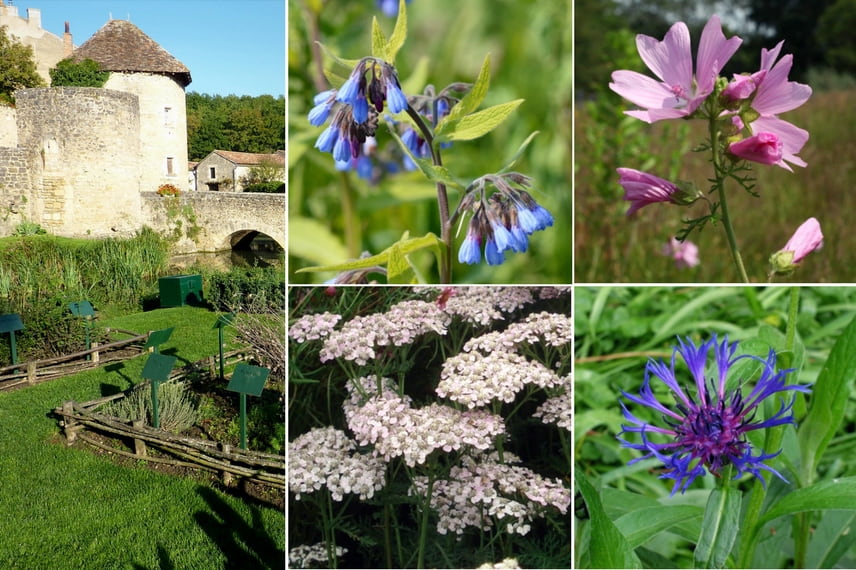


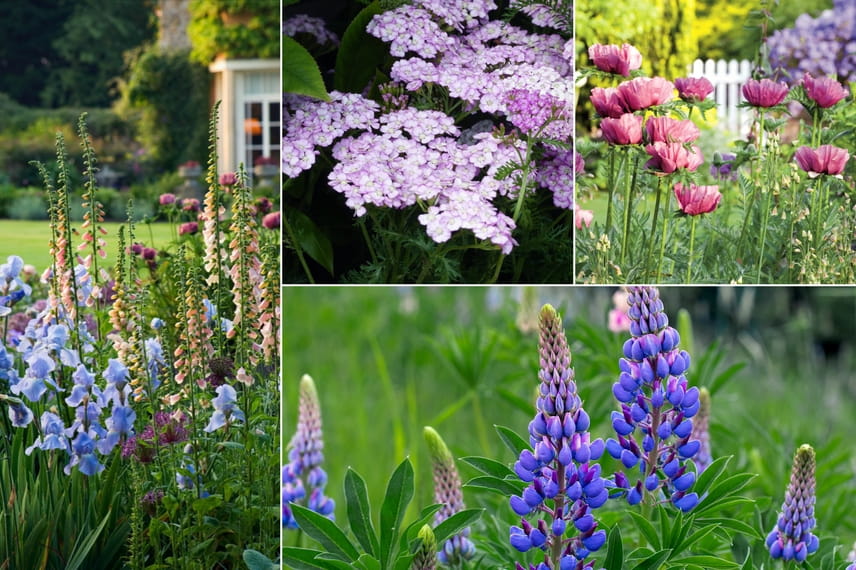
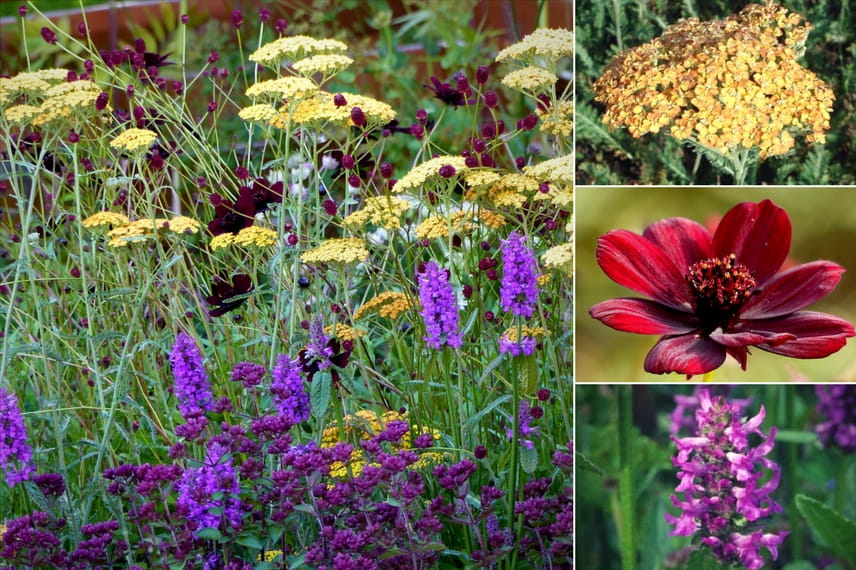
Comments